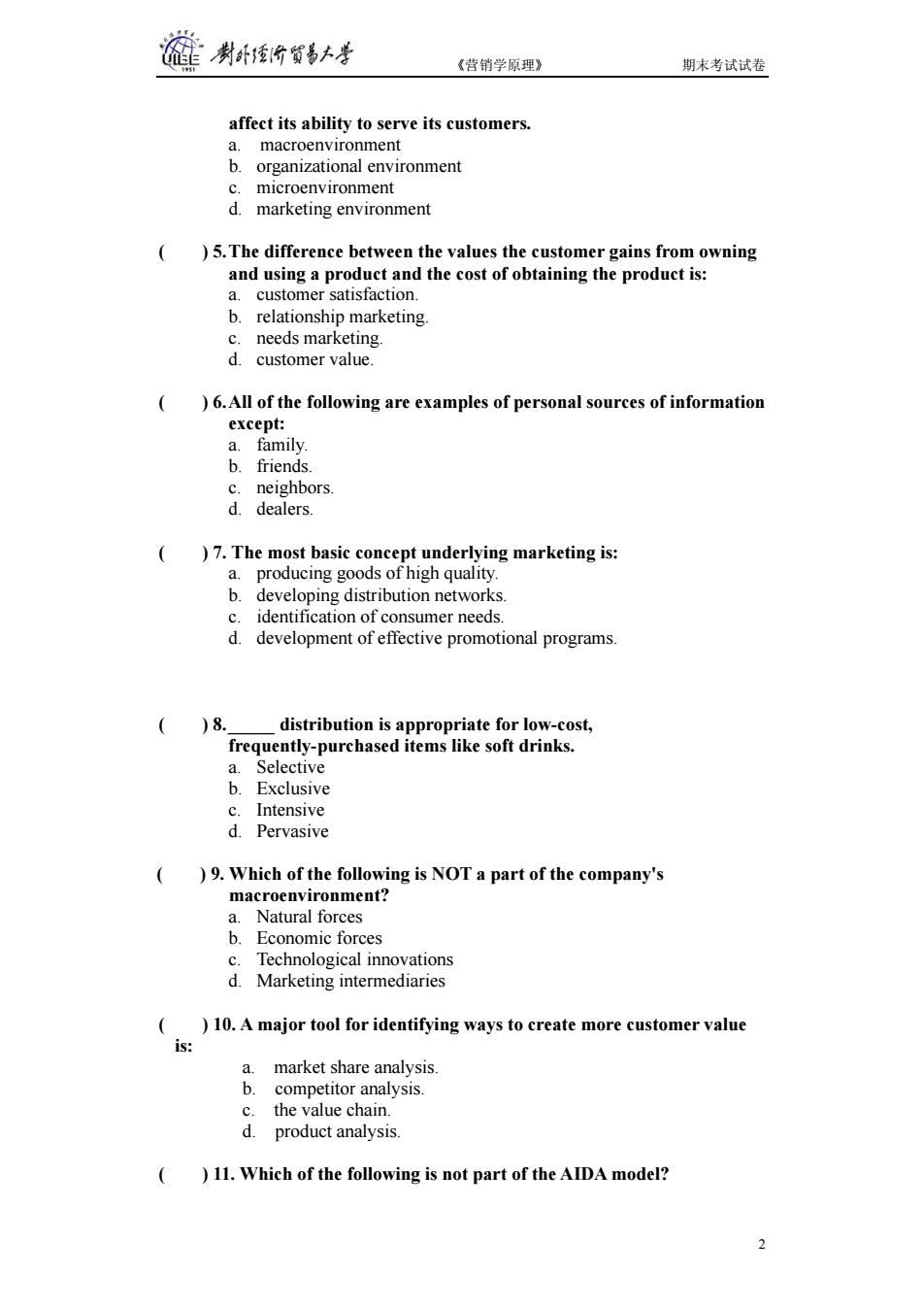正在加载图片...

黄所时号 《营销学原理》 期末考试试卷 affect its ability to serve its customers. a.macroenvironment b.organizational environment C. microenvironment d.marketing environment ()5.The difference between the values the customer gains from owning and using a product and the cost of obtaining the product is: a.customer satisfaction. b.relationship marketing. c.needs marketing. d.customer value. ()6.All of the following are examples of personal sources of information except: a.family. b.friends. C. neighbors. d.dealers. ()7.The most basic concept underlying marketing is: a.producing goods of high quality. b.developing distribution networks C. identification of consumer needs. d.development of effective promotional programs. ()8. distribution is appropriate for low-cost, frequently-purchased items like soft drinks. a.Selective b.Exclusive c.Intensive d.Pervasive ()9.Which of the following is NOT a part of the company's macroenvironment? a.Natural forces b.Economic forces C. Technological innovations d.Marketing intermediaries ()10.A major tool for identifying ways to create more customer value is: a.market share analysis. b.competitor analysis. c.the value chain. d.product analysis. ()11.Which of the following is not part of the AIDA model?《营销学原理》 期末考试试卷 affect its ability to serve its customers. a. macroenvironment b. organizational environment c. microenvironment d. marketing environment ( ) 5. The difference between the values the customer gains from owning and using a product and the cost of obtaining the product is: a. customer satisfaction. b. relationship marketing. c. needs marketing. d. customer value. ( ) 6. All of the following are examples of personal sources of information except: a. family. b. friends. c. neighbors. d. dealers. ( ) 7. The most basic concept underlying marketing is: a. producing goods of high quality. b. developing distribution networks. c. identification of consumer needs. d. development of effective promotional programs. ( ) 8. _____ distribution is appropriate for low-cost, frequently-purchased items like soft drinks. a. Selective b. Exclusive c. Intensive d. Pervasive ( ) 9. Which of the following is NOT a part of the company's macroenvironment? a. Natural forces b. Economic forces c. Technological innovations d. Marketing intermediaries ( ) 10. A major tool for identifying ways to create more customer value is: a. market share analysis. b. competitor analysis. c. the value chain. d. product analysis. ( ) 11. Which of the following is not part of the AIDA model? 2